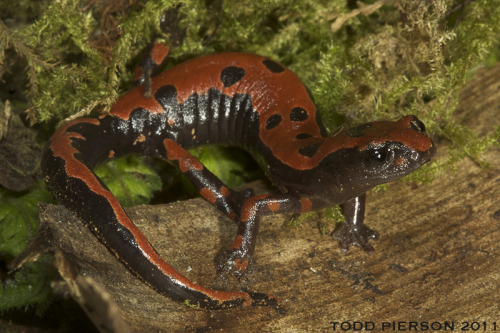#near threatened

South America//Near Threatened//Rodentia//image source
Fun Fact: Although they resemble rabbits, maras are more closely related to guinea pigs and cavies.

MIKADO PHEASANT
Syrmaticus mikado
©Snowyowls top
©Robert tdcbottom
The Mikado pheasant is endemic to mountainous regions of Taiwan. The female is brown but the male is notable for his beautiful blue-purple plumage.
The species occupies dense shrubs, bamboo growth and grassy terrain with conifer over story in central and southern Taiwan, at elevations from 6,500-10,500 feet /2000 to 3200 meters above sea level.
There are some Mikado pheasants bred in captivity, but there are only about 10,000 individuals in the wild, particularly in the Yushan National Park. (Note: Yushan and the Mikado Pheasant are pictured on the Taiwanese 1,000 Dollar bill.)
Heavy hunting pressure was a problem in the past, but is not a serious threat today. The Mikado pheasant is evaluated as near threatened on the IUCN Red List of Threatened Species. It is listed on Appendix I of CITES. source
Post link
Lincoln’s Web-Footed Salamander - Bolitoglossa lincolni
Bolitoglossa lincolni (Plethodontidae) is a stout salamander with a bright coral red coloration on the back, tail, and dorsal surfaces of limbs, and sometimes the fingers and toes. It is known from the central plateau of Chiapas, Mexico, and mountainous areas of western Guatemala. It lives in low vegetation (probably including mosses), under bark, and in bromeliads, with a broad enough habitat that its populations are not declining. However, due to destruction of habitat, the species is listed as Near Threatened on the IUCN Red List.
Bolitoglossa species are able to propel themselves forward by an “explosive tail flip” that carries them off the vegetation – a protective device when in danger during its daylight resting hours. Another protective behavior is to raise its tail as an offering to a predator. If the tail is grabbed, the salamander can disarticulate and run off, leaving the predator with only the tail.
Photo credit: ©Todd Pierson (CC BY-NC-SA 2.0) | Locality: Cuchumatanes, Guatemala (2011)
Post link









